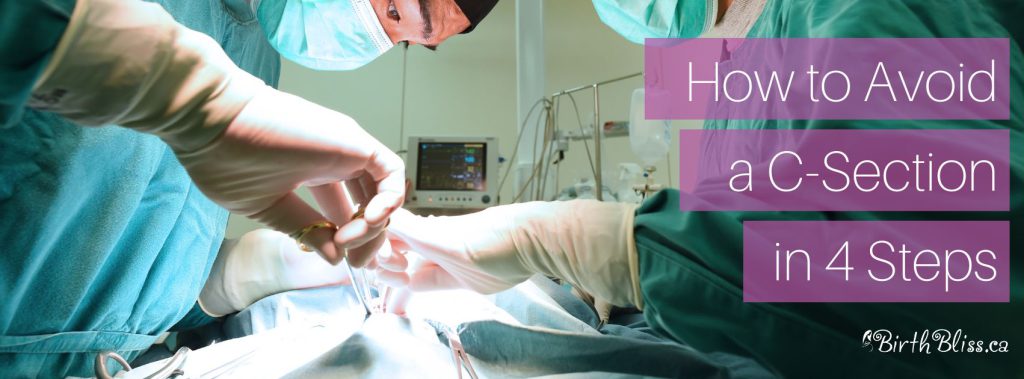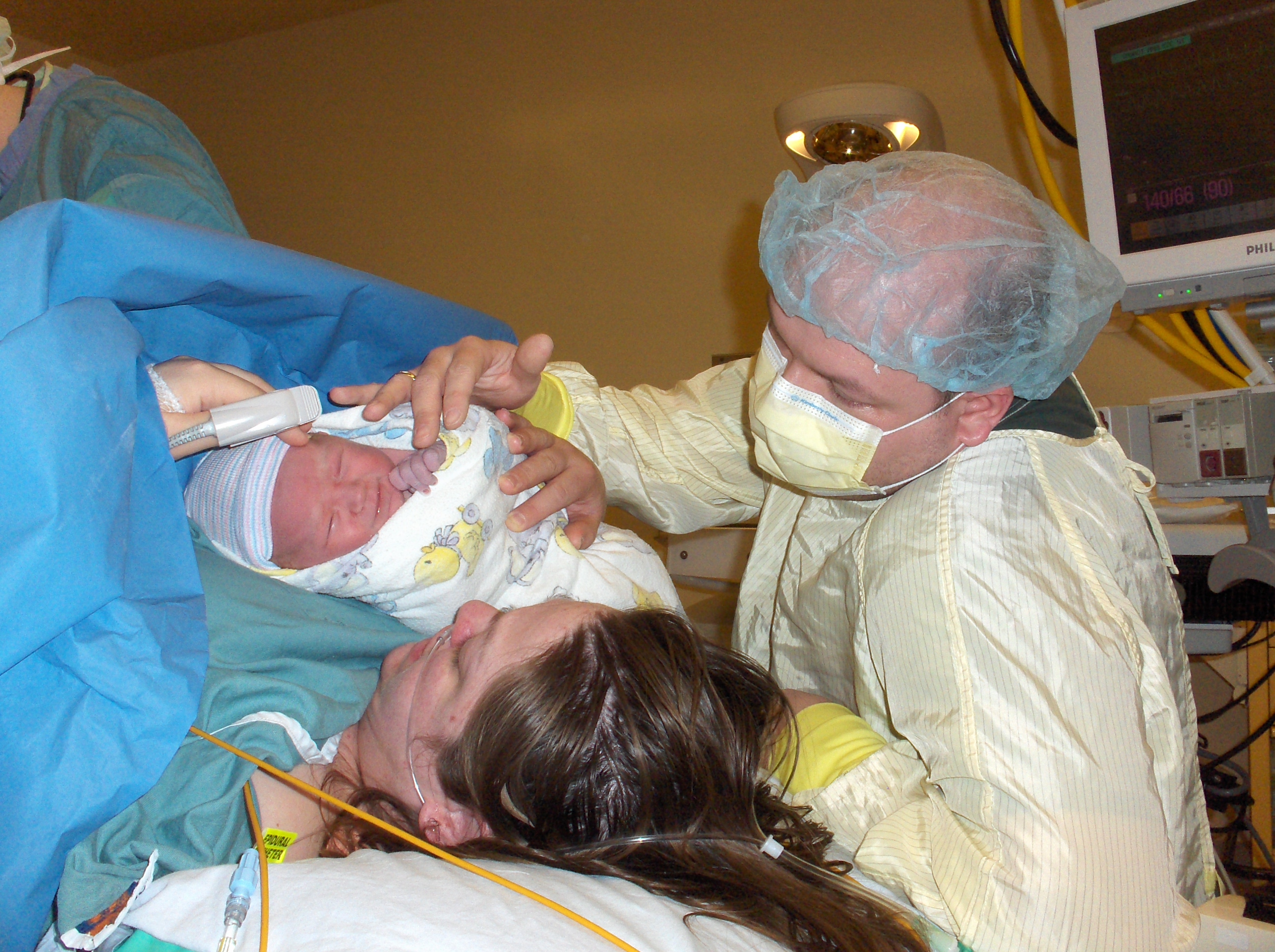
This is for First-Time Moms who want to LOWER THE RISK OF CESAREAN BIRTH. Find out what you NEED to know to dramatically decrease the odds of a c-section, and prevent an unnecessary surgical birth. These are the REAL LIFE recommendations I teach my students to help them have the best birth possible!
https://www.youtube.com/watch?v=vK1K8mmmfwU
This post is all about how to cut the odds of a c-section when you don’t really need one.
We’re going to look at four ways to avoid a cesarean. Currently, in North America (both in Canada and in the U.S.) the c-section rate is about 34% and that translates to a one-in-three chance of having a cesarean birth.
However, researchers estimate that about half of those surgeries are medically unnecessary. In fact, the world health organization tells us that 85 to 90 percent of women can have a vaginal birth and actually should have a vaginal birth because it’s less risky for mom and baby.
When we are looking at why is that c-section rate so high well there’s a whole combination of factors that are playing a part and the encouraging thing for you to know, is that many of these factors fall within your control or at least your influence. So let’s take a look at four things that you can do to stack the odds in your favour for a vaginal birth.
#1 Choose Your Birth Location and Your Medical Care Provider Wisely
Certain hospitals are going to have higher c-section rates than others even when all other factors are equal. Across North America, c-section rates can vary anywhere from 7% all the way up to 70%. That is a huge difference. Differences in patient complexity cannot account for that biggest spread and the same thing happens for medical care providers. Now of course some of this can be influenced by who that doctor or midwife serves. If it’s an obstetrician who serves a lot of high-risk women then it makes sense that they’re going to have a higher c-section rate because more of those women would have circumstances that would warrant a true need for a cesarean. However, there’s still a bigger spread than differences in patient complexity can account for. Just like with the hospitals.
So if you are looking at who to choose, you want to choose a medical care provider who is aligned with you and your vision for birth. When you do that the chance of a c-section is greatly decreased and I gotta say if you happen to be low-risk midwives generally have lower c-section rates. Now to help you figure out who you should be a match with I have an awesome tool for helping you choose the right medical care provider. I’ll share how you can get that at the end of the article.
Now I also need to acknowledge that one of the reasons that c-sections are becoming more common is that they are becoming safer and that is a trend that has been happening over the past few decades. I think that’s really encouraging because it means that if you do truly require that c-section then now it is a much safer operation than it was 10 years ago or 20 years ago.
That being said we’re still doing more c-sections that are truly necessary and as I already mentioned the entire medical and scientific community agrees with this.
Although the percentage of babies who are born via c-section has steadily increased over the past decades this has not translated into increased health for either moms or babies.
Now if you’re kind of interested in digging deeper into this there’s a super awesome documentary film called the Business of Being Born. If you haven’t watched it yet I highly recommend it.
So your number one takeaway is that you want to be really choosy in the selection of your birth location and your medical team. What I want to know now is: can you commit to choosing your doctor or midwife with a lot of care and attention? I’m hoping that that is a yes and I want you to know that if you are currently unhappy with who you are with – then it is never too late to change! Even if you’re a couple weeks out of your from your due date you can still change and find someone who’s a better fit.
#2 Have Loving Support During Labour
Women who are well supported emotionally mentally and physically are 26 times more likely to give birth vaginally! This support can come from your partner or someone else.
Now if your partner gets some training around how best to support you they’re gonna be like a hundred times more effective in that role. Most guys are eager to help but are kind of clueless when it comes to labour and birth. They are really worried that they’re going to be helpless and they don’t want to see you suffer. So getting some training for them is going to help you.
You also want one additional female in the room with you for added support. This could be a close friend, it could be your mom your sister or a doula. Now the advantage of a doula is that they are already trained and they know how to give that labour support but if you aren’t hiring a doula, just make sure that that additional support person has some guidance on how to best support you.
#3 Movement Helps Get Babies Out Vaginally
We know this from numerous studies but I’ll just highlight one for you. A hospital in Philadelphia was able to decrease its c-section rate by 10% by implementing one single change.
That single change was movement. When women at that hospital were encouraged during labour to follow their body’s lead (for example side laying or being on all fours or standing and rocking) and they felt free and encouraged to move in ways that felt the most comforting and this helped their babies move through the birth path more effectively and hence they saw that 10% decrease in c-sections. So you want to move in labour.
And in pregnancy too!
Movement during your pregnancy helps to keep your body healthy and that greatly reduces the risk of a c-section. Some of my favourite prenatal activities are swimming, walking and yoga. They’re all really safe and you can do them throughout your entire pregnancy. To make this as easy as possible for you I have a whole bunch of prenatal yoga videos on my youtube channel and you can just watch those and do them alongside me. You can click here to check them out.
Staying active helps you stay healthy. Healthy moms have a better chance of a vaginal birth even if you have a large baby! Just a word of caution about the methods that we use to assess the baby’s weight near the end of pregnancy. These methods aren’t very accurate and are not generally a reason for a scheduled c-section.
#4 Learn To Work With Labour
To avoid a c-section, you want to be building some of the wisdom and skills that you need. By knowing how to work with your body you’ll be more able to handle labour even in the case of a longer labour.
This includes having a spontaneous start to labour unless there’s a medically required induction and then staying at home, labouring at home until you are in well-established or active labour and then waiting until you are further along before getting an epidural or better yet avoiding the epidural altogether.
All of this allows the baby the time he or she needs to fully get ready to make that transition to life outside of your body; that big transition from your womb to your arms!
When you can avoid that epidural you also lower the risk of other interventions. So studies have shown us that every time that we intervene in labour. Anytime we take a medical action then there’s this domino effect that makes the next medical action more likely and that’s often referred to as the cascade of interventions. So for example, if you get an epidural it makes it more likely that you’ll need to augment labour (that means drugs to make labour stronger). In the U.S. they augment with Pitocin, and in Canada with Syntocinon. That’s the same drug. It’s a synthetic form of oxytocin which is the driving hormone of labour. So augmenting labour leads to more chances of fetal distress and fetal distress leads to more c-sections. So that’s just one example of that cascade of interventions. So the takeaway here is if you cope well with the contractions of labour then you’re more likely to have a vaginal birth.
In fact, of women inside my better birth course, 95% of them give birth vaginally. They vastly change their odds because they learned how to work with their bodies and you can do that too. I have a wonderful training for you. It’s completely free. It’s called the Three Steps to Ease Pain During Labour Without The Epidural.
So if you’ve been hoping for a vaginal birth and you want to learn ways to successfully handle those labour contractions then this is a workshop that you definitely want to be there for. I’ve figured this out already and I’m going to share all the ways that you can turn down pain literally like it’s like a dial and once you know the ways you can just turn it down. Click here to access the free workshop!
As a special um bonus for attending that workshop, I’ll be gifting you with a tool for selecting the right care provider. That’s the tool that I mentioned right at the beginning of this so that you’ll know the right questions to ask. So that you get a doctor or a midwife who truly resonates with you and is in alignment with you, so you get the highest level of care that is right for you.
Alright, let me know what’s been the most helpful in our conversation today and what are you going to act on.
Maybe after this you’re going to go and you’re going to investigate your hospital c-section rate or maybe you’re going to go and interview some doula or maybe you’re gonna get started developing some of those skills for labour.
I would love to know! Drop a comment down below: What are you gonna focus on first?
I would encourage you to take action on this because I just want to remind you that you have influence over this journey and even though it can be an intense journey I promise you the light at the end of this tunnel is the brightest that you will ever see! There is nothing that compares to meeting that sweet baby on the outside. I am so excited for you and your journey and I hope this has been helpful.








